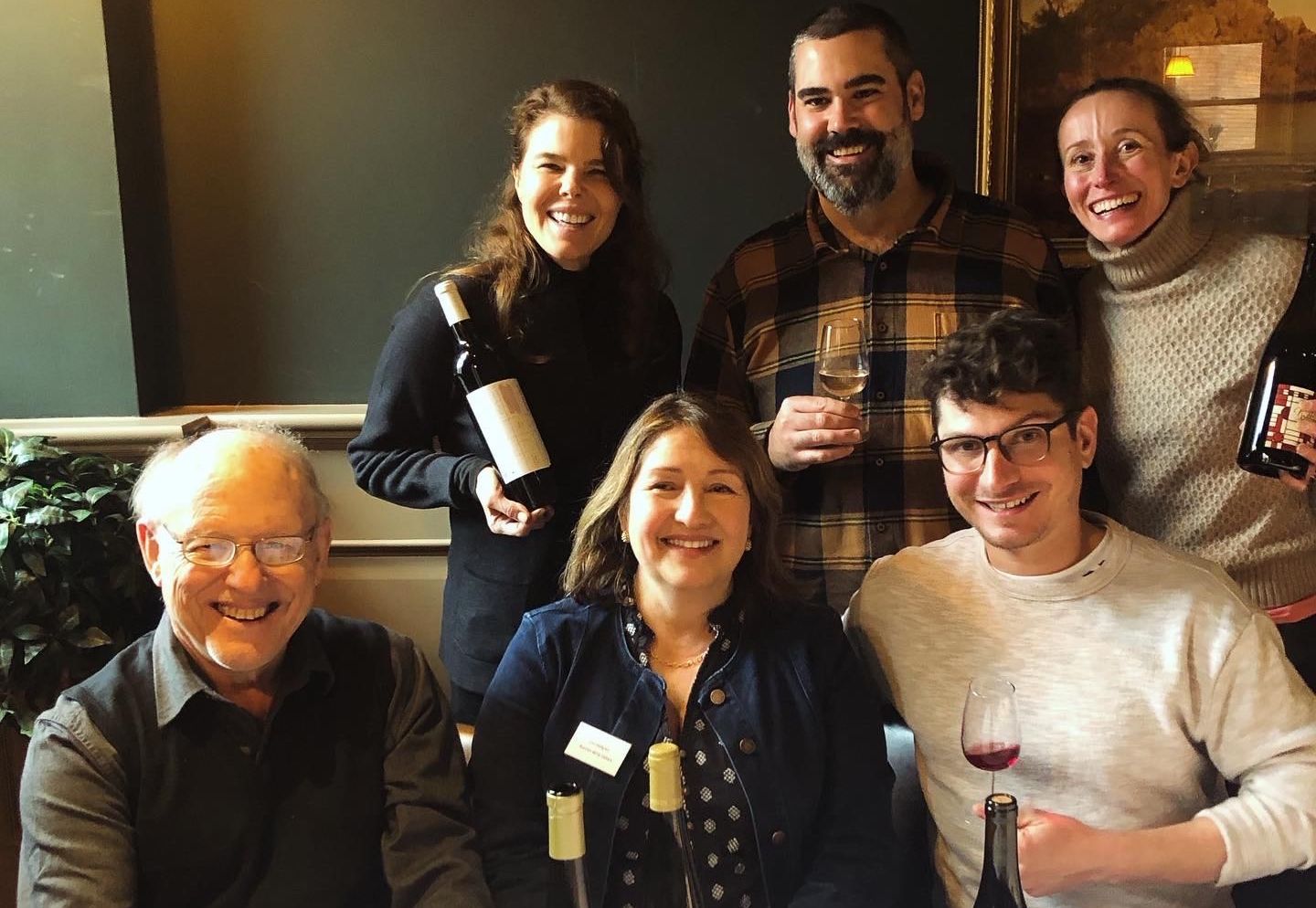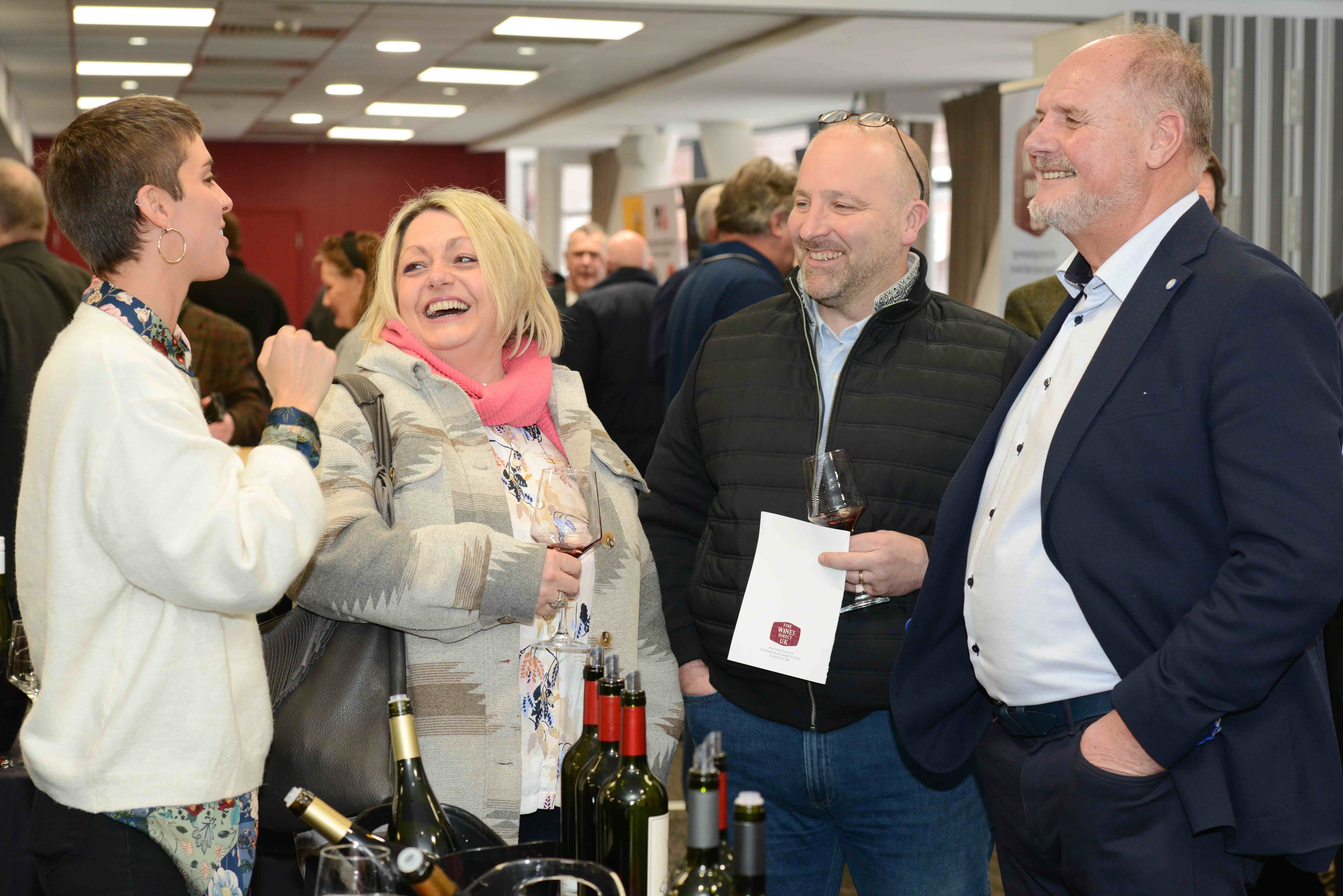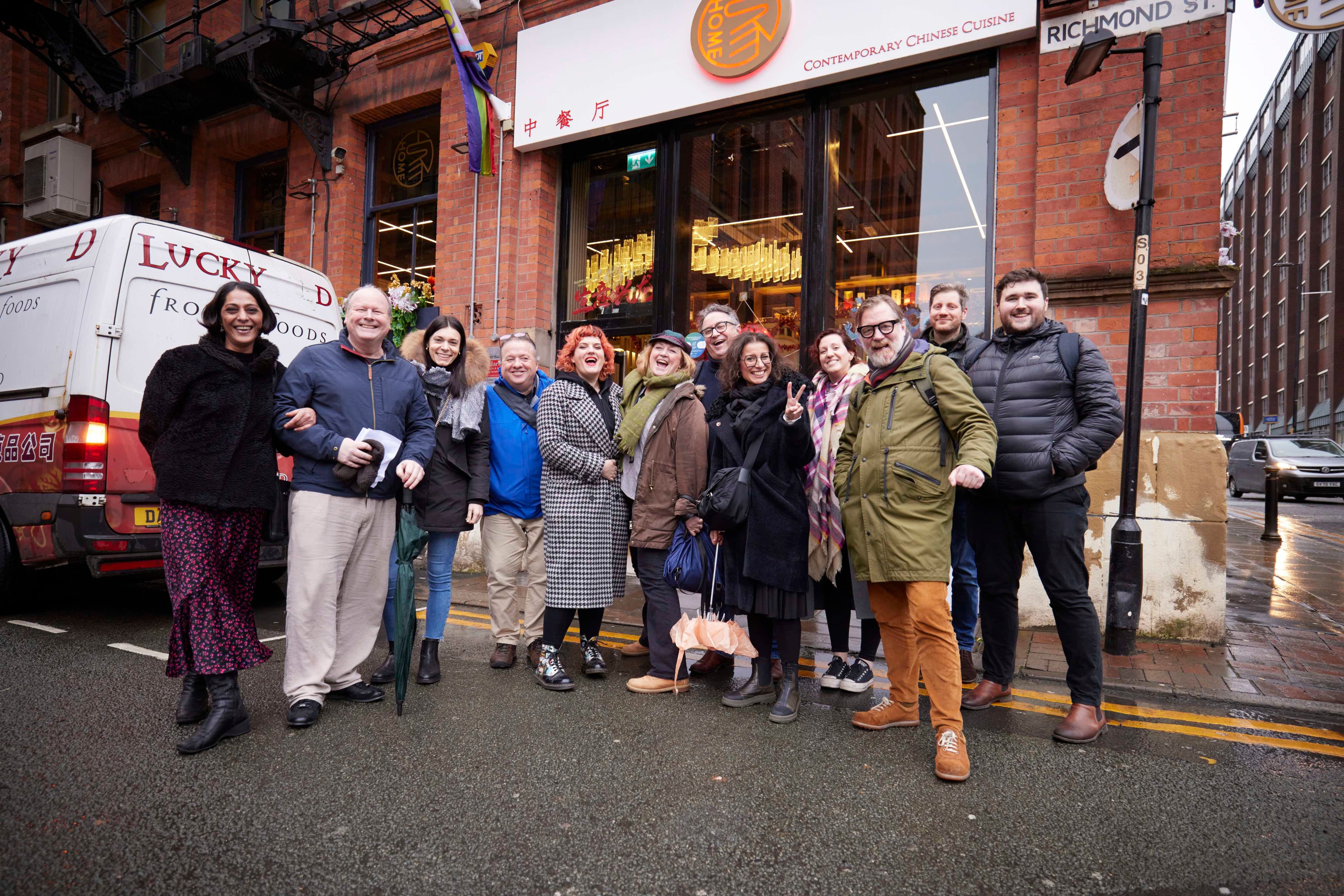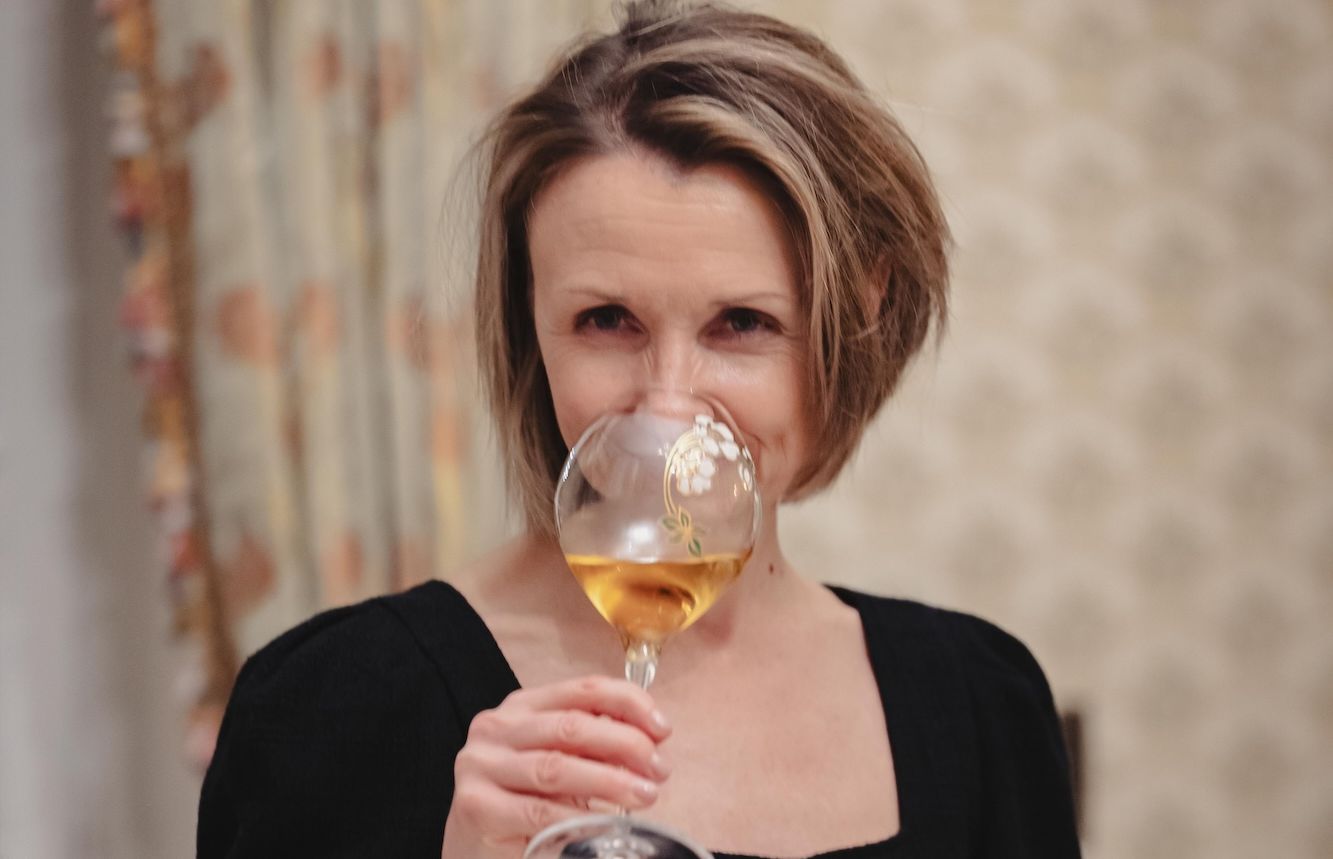“South African white wines, in particular, stood out, so I tasted as many as I could and I was deeply impressed,” writes Garnett.
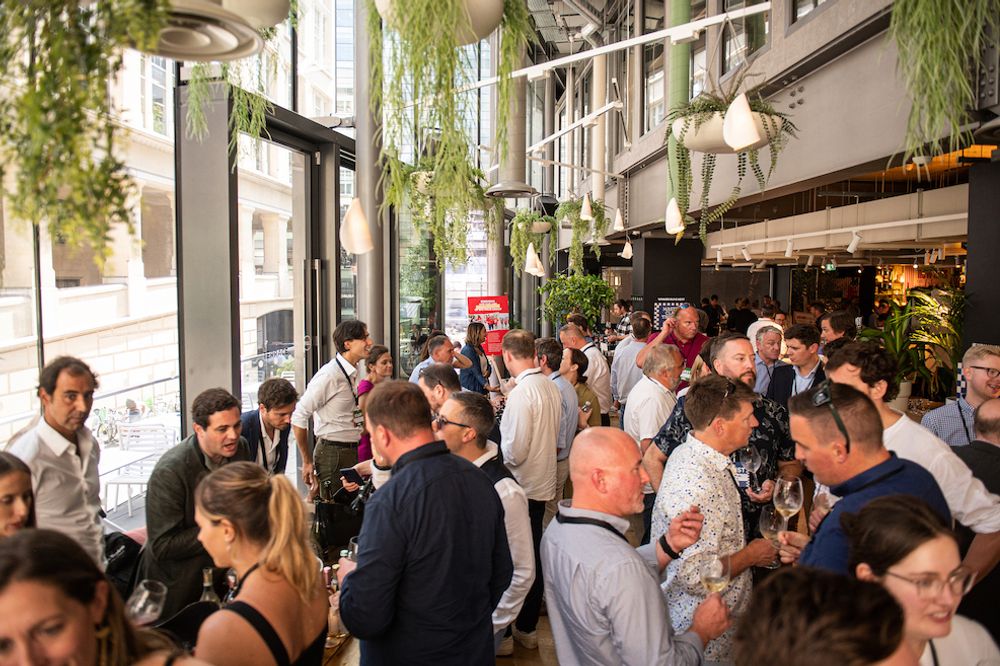
Tasting the best of South Africa and Italy: Bibendum’s Cape & Boot tasting
Bibendum‘s Cape and Boot tasting was a masterpiece of canny curation and nifty naming, being a focus on the importer’s South African and Italian agencies. Towering amicable Saffers and platters heaving with biltong lined half the walls. Italians busied, bustled and buzzed over the other. The throng was so intense that it was quite tricky getting to some wines. Informality was key to making the venue and tasting the success it clearly was. In-depth tasting opportunities such as this are much appreciated and I would have liked to have stayed all day.
Italy is Bibendum’s largest-selling sector, and there was much to like. My favourites Lageder and Ferrari were on excellent form and there were a few new faces such as Sardinian Cantina Mesa, which showed a fantastically zippy, lime, peach and zest-laden Vermentino.
Focusing on South African white wines
I had the pleasure, however, of focusing my senses on South Africa, a country so sensuous it is impossible not to be moved by the wines they produce, hailing as they do from a landscape, so ancient, vast and beautiful that, when you are there, you feel you are merely a speck, a minuscule voyeuristic visitor to a timeless Eden. I confess to being hopelessly seduced by every sip I take of the country’s lusciously intoxicating, miraculously priced wine. All of the bottles I sampled had that magical sense of place that makes any wine – simple or complex – irresistible.
White wines, in particular, stood out, so I tasted as many as I could and I was deeply impressed by Stellenrust, a producer who not only makes sumptuous wines from predominantly old vines but is Fair Trade and operates a black empowerment system that the world should take note of. More follows.
One point of fact, though, is that this ‘New Wave’ of South African producers can’t be called new anymore; some of our Saffer hosts had salt-and-pepper barnets and vari-focals, even the odd floral midi dress. But South African wine continues its stratospheric evolution.
Graham Beck’s Méthode Cap Classiques
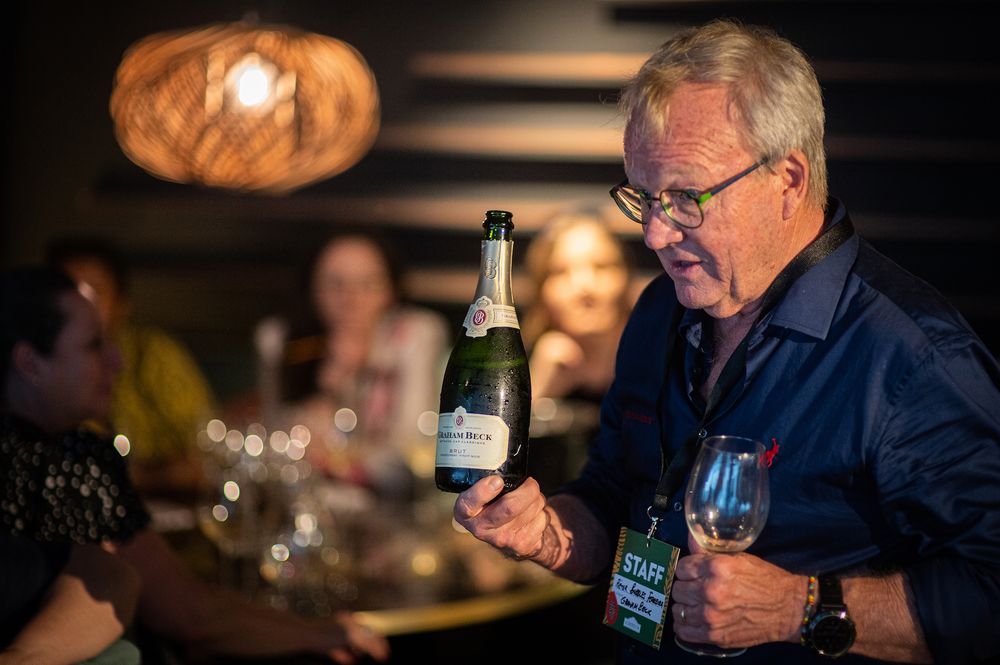
Bubble master Pieter Ferreira
The beaming face of Bubble Master Pieter Ferreira was a welcome sight, as are the gorgeous wines he creates. Graham Beck‘s Méthode Cap Classiques are hugely sought after, and his 2018 Cuvée Clive has been named South African Sparkling Wine of the Year by Tim Atkin. The new vintage we were tasting was 2017, however, which Beck, aka Mr Bubbles, says brought balance, brightness and longevity to the glass.
The MCC category improves every year as site selection, older vines and greater time on lees bring complexity and characteristic ‘sunshine’ as Ferreira appositely describes it.
Graham Beck Vintage Blanc de Blancs 2017, Robertson. £19.05
12.3% abv. Grown on limestone-heavy soils, the base wine spends five months in barrel prior to secondary fermentation. Forty-eight months of lees ageing follows. Lusciously creamy layers of lime, Granny Smith sherbet, candied lemon and buttery Biscoff biscuit make this a moreish choice.
Graham Beck Ultra Brut 2017, Robertson. £19.05
12.9% abv. 66% Chardonnay, 33% Pinot Noir. Grown on limestone-heavy soils. Partially fermented in wood for creaminess and stainless steel for freshness. Zero dosage is a rarity in South Africa and this is not produced every year. 62 months on lees. The wine is fresh, crisp, zesty and dry with a sublimely gorgeous creamy texture and a zippy, yet round, rich, nutty note of biscuity pastry, red apple and raspberry.
Graham Beck Brut NV, Roberston. £14.53
12.3% abv. 55% Chardonnay, 45% Pinot Noir – a hugely successful well-priced staple blend made with 10% of reserve wine and grapes sourced from many growers across the Western Cape. Rich, creamy and complex with toast and biscuit, pear, apple and candied lemon. Delicious.
Graham Beck Brut Rosé, Robertson. £14.53
12.3% abv. 52% Chardonnay, 48% Pinot Noir. Bright fresh creamy and redolent with cherry, raspberry and candied lemon.
Graham Beck Vintage Pinot Noir Rosé 2017, Robertson. £19.05
12.5% abv. Approx. 90% Pinot and 10% Chardonnay from prized vines, jointly pressed followed by four years of lees ageing. Fresh with creamy cherry and raspberry zip, blossom, white pepper and a hint of fennel.
Springfield Estate and whites to complement fish

South African white wines
I enjoyed meeting the owners of Springfield Estate very much. Characterful, rosy-hued, eccentrics Abrie and Jeanette Bruwer are a charming accompaniment to their wonderful wines. Descended from persecuted Huguenots who left the Loire in the 17th Century they’ve owned Springfield for four generations. Their retro styled labels really stood out, as do they.
The Springfield Estate lies on the Breede River in Robertson, surrounded by mountains. Brother and sister Abrie and Jeanette talk of fishing and supping; their wines, they say, are made to complement the fish they catch. Low intervention, single vineyard and wild yeast are their trademarks. They are one of only two producers to plant Albariño in South Africa.
Springfield Estate Albariño, £15.01
12.5% abv. Profoundly aromatic, salty and pithy with candied lemon, sweet blossom, lime, apricot, peach, grapefruit, wet stone and a hint of almond. Fresh, sublime and sapid.
Springfield Estate Wild Yeast Chardonnay, £15.31
13.5% abv. No wood, cement, full malolactic and ten months on lees. Superbly silky, viscous, round yet pithy, and chalky with lemon, pear, nectarine, salty stone, sage, lemon verbena and cream.
Springfield Estate Miss Lucy White Blend, £14.66
12.5% abv. 50% Sauvignon Blanc, 28% Semillon, 18% Pinot Gris 4% Sauvignon Gris. Miss Lucy is made to complement fish and is a super sapid, salty, fresh blend with grassy lychee, white pepper, grapefruit and peach on the nose and white melon, grapefruit, lemon verbena, peach and salty lychee on the palate. Textural and delicious.
Ghost Corner: as cool climate as South Africa gets
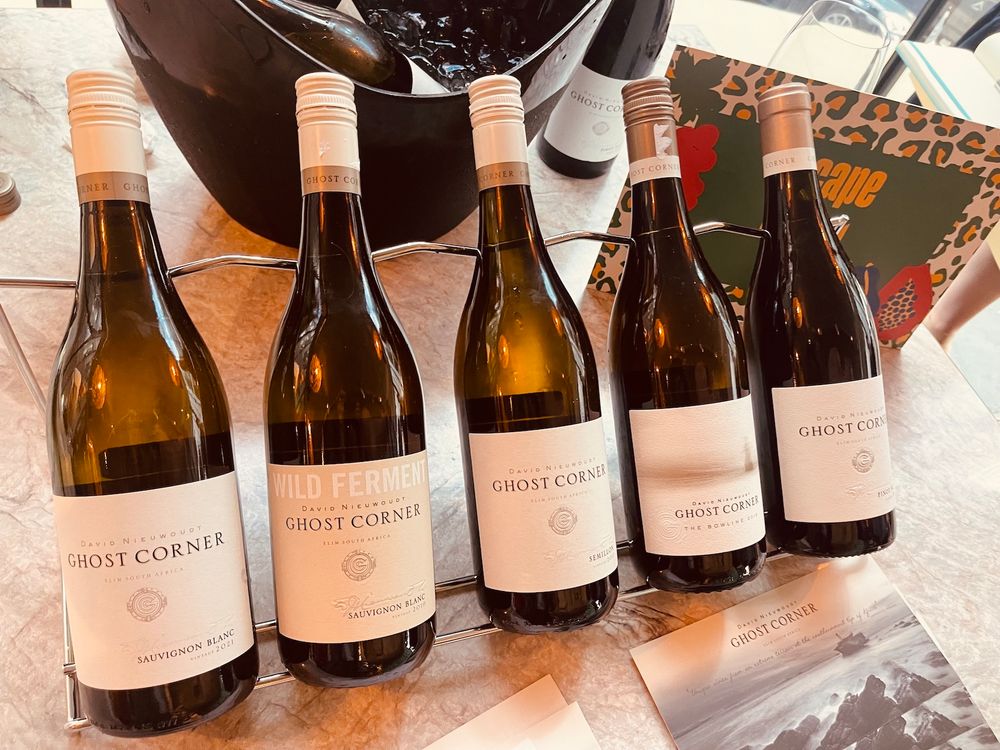
We winos do love a yarn and David Nieuwoudt spins the perfect tale when talking of the appropriately named Ghost Corner. This time delivered by pouring behemoth Nick Vlok who gave me the lowdown on “The most Southerly planted vineyard in Stellenbosch, closest to the sea.” The southernmost tip of Africa, where compasses fail to show true North and a treacherous reef extends out from the coast. Some 130 trading ships were lost over the years and grim tales of headless ghosts and grey ladies are rife. The climate is cool, well as cool as South Africa gets and the soils are deep, lime-rich slate.
I first came across David Nieuwoudt through his Longavi collaboration with Julio Bouchon in Chile, then through the Cape Wine Guild. His family has farmed Dwarsrivier in Cederberg since 1893.
Ghost Corner Wild Ferment Sauvignon Blanc, Elim. £20.78
13% abv. This sees some wood, with 13% spending nine months in new oak barrels. The wine is bone dry but offers the illusion of creamy, salty sweetness; it’s ever so slightly round with pear, grapefruit, and even plum – yet pithy, textural, fresh and bright with a deliciously appealing herbal complexity.
Ghost Corner Semillon, Elim. £17.91
13% abv. Again I get a herbal note, a moreish salty, earthy minerality, and a smoky, wax-tinged crispness. Candied lemon, and a hint of underripe pineapple. Elim was once a mission station where holy wine was produced, incidentally.
Stellenrust – more than just winemaking
Fairtrade producer and old vine custodians, Stellenrust, is responsible for one of the most successful and impressive black empowerment movements in South Africa. The farm is run by brothers Tertius Boshoff and Kobus van de Westhuizen, winemaker and viticulturist, respectively. Through this movement, 70 employees have taken ownership of the land they farm, people that Tertius and Kobus played with as children, and friends who they’ve known all of their lives. Their decision to join the Fairtrade movement in 2010 was taken not to sell wines but to contribute further to the excellent existing relationship with their workers and optimise the support they could give them. Education is a tertiary benefit of the programme with far-reaching consequences, a number of the younger members of the Stellenrust community are graduates who will go on to have successful careers independent of the wine trade. Deeply affecting stuff.
Stellenrust Sauvignon Blanc, £10.17
Fresh, sapid and salty with a lovely herbal blackcurrant leaf note, a hint of mineral; wet stone and tangy ripe fruit.
Stellenrust Chenin Blanc £10.17
Pear, grapefruit and notes of soft vanilla, lime and tropical fruit. Delicious.
Stellenrust 52 Chenin Blanc (barrel fermented) £16.22
Made from 50+ year-old vines. A deliciously quaffable, waxy, peach-laden sup of buttered honey-spiced zesty apple and a sweet hint of orange blossom.
Creation Wines and the art of natural beauty
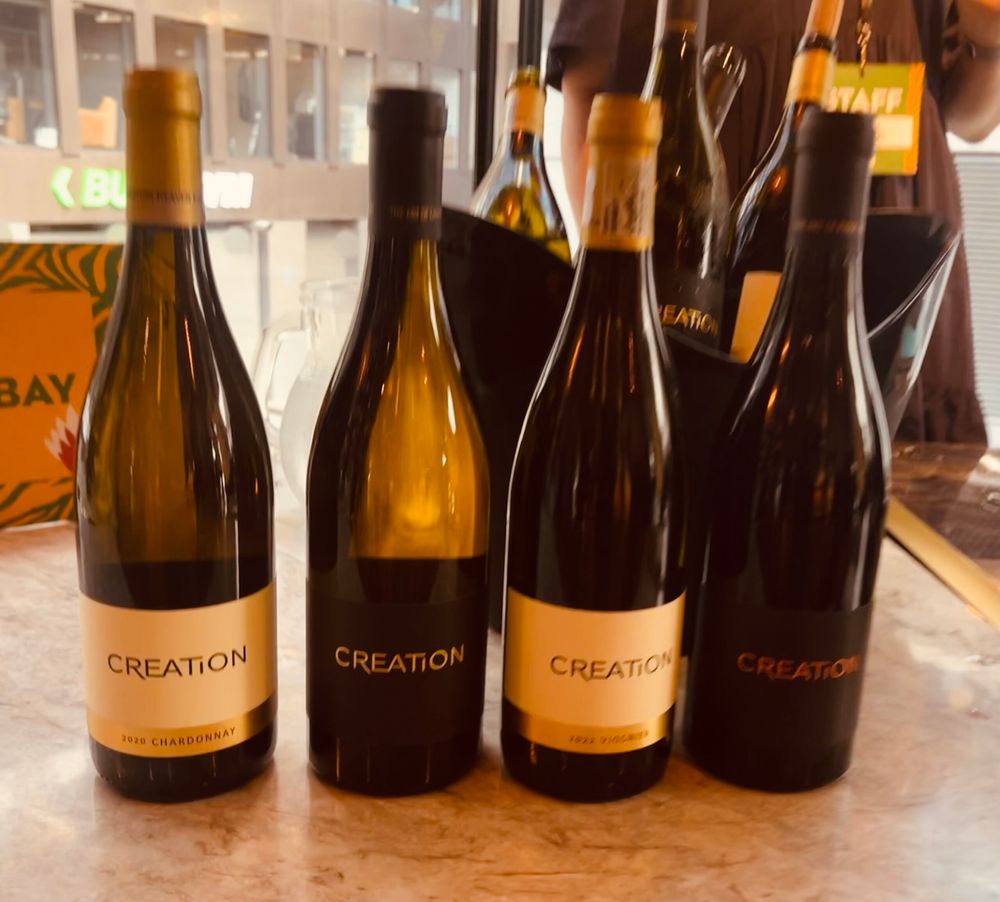
South African white wines
Swiss winemaking master Jean-Claude Martin and his Saffer ‘wine royalty’ wife, Carolyn Finlayson, named their wines well. They founded their now 50-acre estate in 2002 on virgin soil in Walker Bay, a beautiful spot down the coast from Cape Town, known for where the icy cool Atlantic brings cool climate complexity and verve – Creation Wines as a location punches pitch-perfect hospitality, natural beauty and an internationally lauded cellar door. Bordeaux and Rhône varietals, Chenin, Pinot and the incredible Chardonnay, as tasted below, are produced.
Creation ‘Art’ Series Chardonnay, Walker Bay £55.51
13.5% abv. Single site selection in Hemel-En-Arde (means Heaven and Earth). This is too damn good or lekka, as they say in SA; layer upon layer of salty, savoury, creamy yet pithy, nutty, herbal, sapid textural delight. It has lime-laden zip, pear and a salty, stony minerality.
Creation Viognier £14.22
13.5% abv. Stony minerality, peaches and cream, lemon verbena and lime; superbly silky, full, round, textural and sapid. Long, fresh and moreish, like lemon sherbet on the tongue with a hint of nutmeg on the finish.
Shannon Vineyards: capturing a sense of place
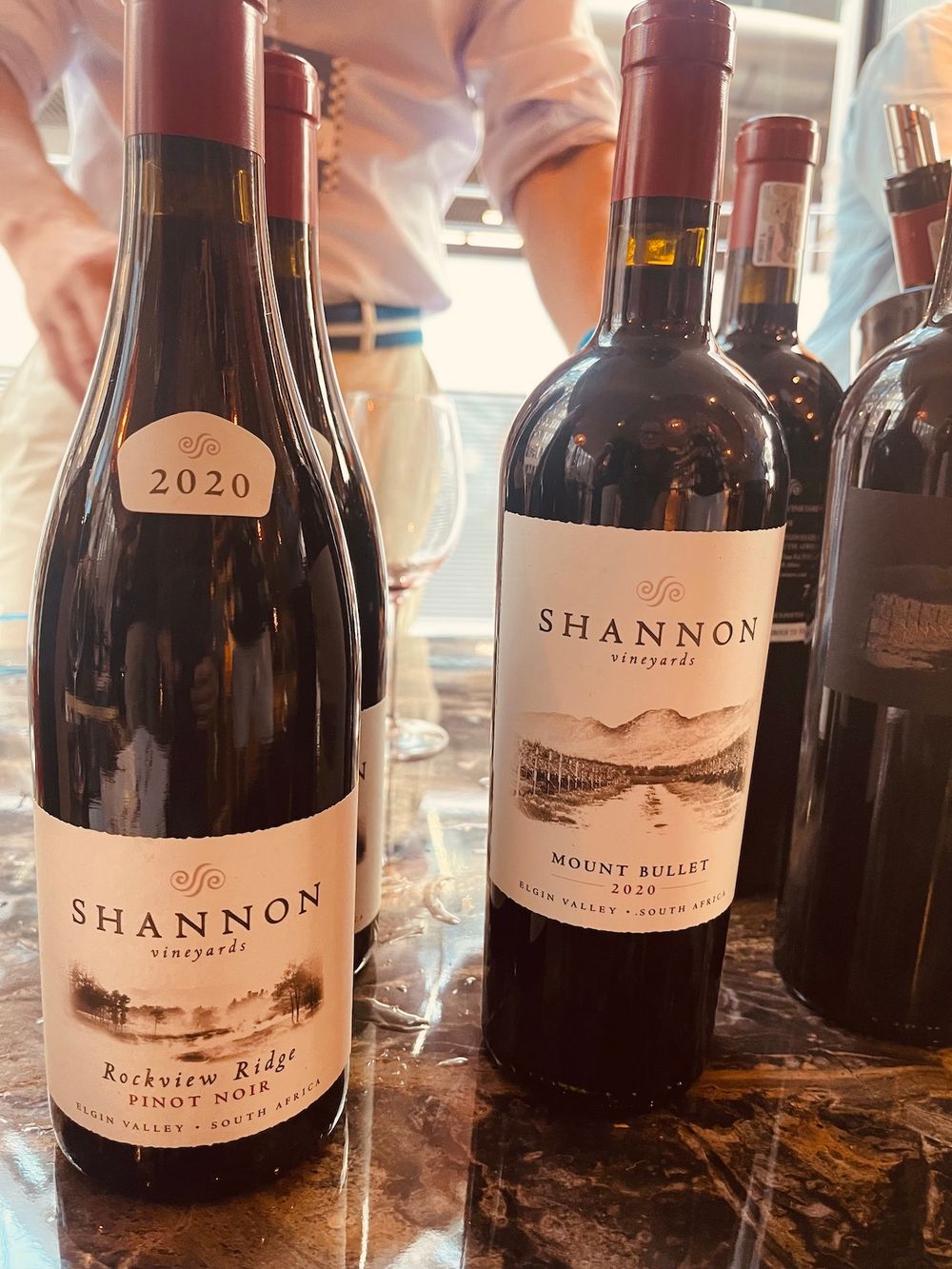
Shannon Vineyards is a small Elgin property with only 10 hectares under vine and a brilliant winemaking duo at the helm – Gordon and Nadia Newton-Johnson – who champion low intervention and are known for wines with a great sense of place.
Shannon Mount Bullet Merlot
14.4% abv. Fresh, fragrant, lithe, tangy and herbal. The fruit is so fresh: zippy blackcurrants and English plum, dusty chocolate and an achingly fresh acidity. This shows what Merlot can do, how elegant it can be, but it’s so rare to find one this fine.
Shannon Rocknrolla Pinot
14% abv. Wild ferment. Gorgeously savoury and fresh with sage and wild herbs, succulent cherries and strawberries too. Mouth-watering.
Journey’s End: jaw-dropping terroir
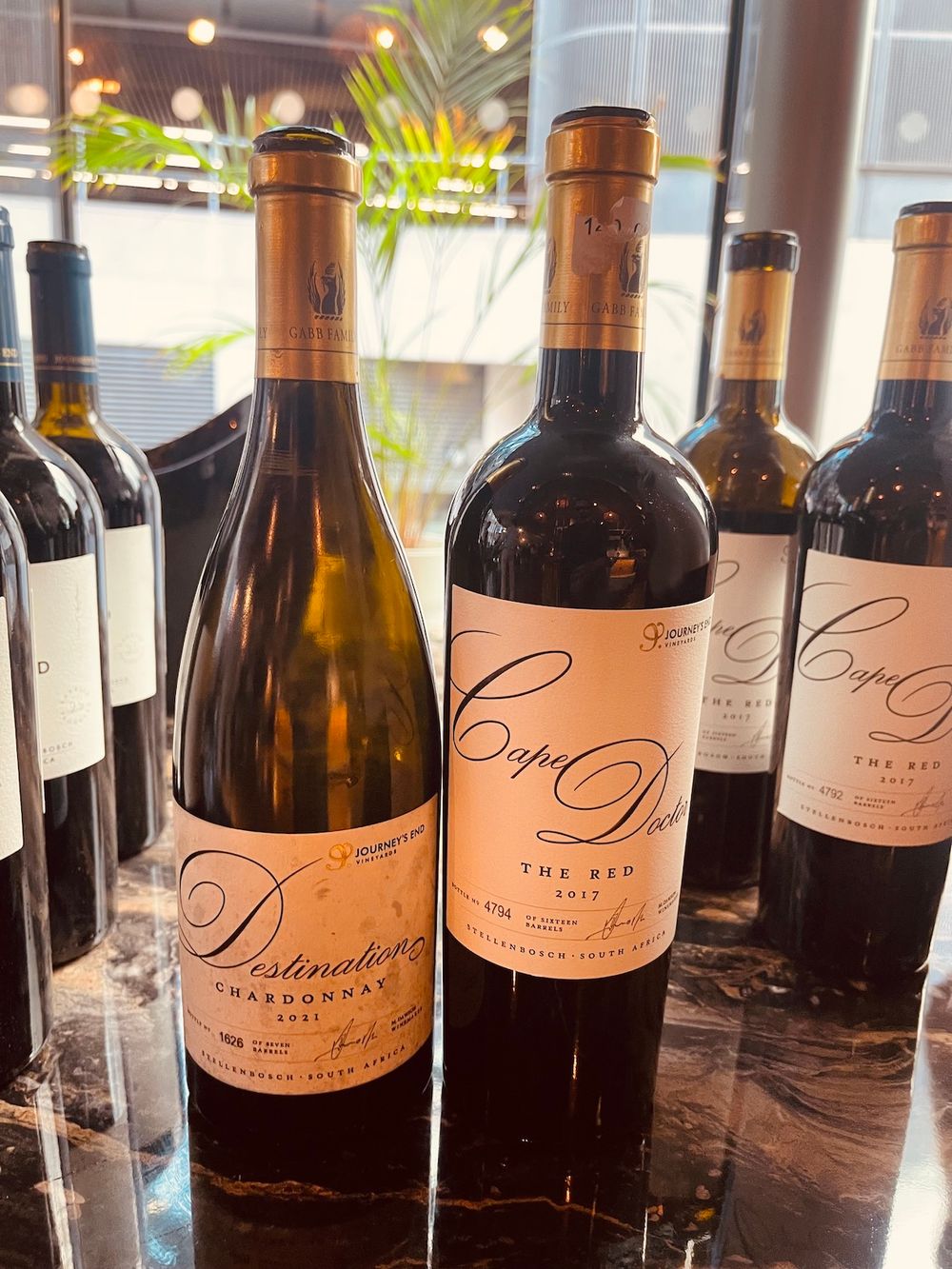
Right in the heart of Stellenbosch, you will find Journey’s End Vineyards and its jaw-dropping terroir. Rollo Gabb is at the helm, and there is a brilliant foundation (Journey’s End Foundation) attached that provides an incredible 30,000 meals a week via soup kitchens to impoverished people in the Helderberg Region. This initiative was fundamental to the survival of unemployed people during the epidemic, a situation already chronic but acutely exacerbated by Covid. Their wines, too, are worthy of note. Minimal intervention, ethics and sustainability are key to this exciting winery.
Journey’s End Destination Chardonnay
13.5% abv. Sees some ten months in new oak barrels. Zesty yet tropical – fresh yet fecund with lime peach and nectarine. Succulent and flinty, salty, full-bodied and rich with vanilla, white pepper and almond toast. Deliciously satisfying.
This feature was written before the floods of September 24 that have caused devastation in many parts of South Africa – badly affecting two of the estates in this piece – Springfield Estate and Creation.
Bibendum is a part of the C&C Group which is a commercial partner of The Buyer. To discover more about them click here.

